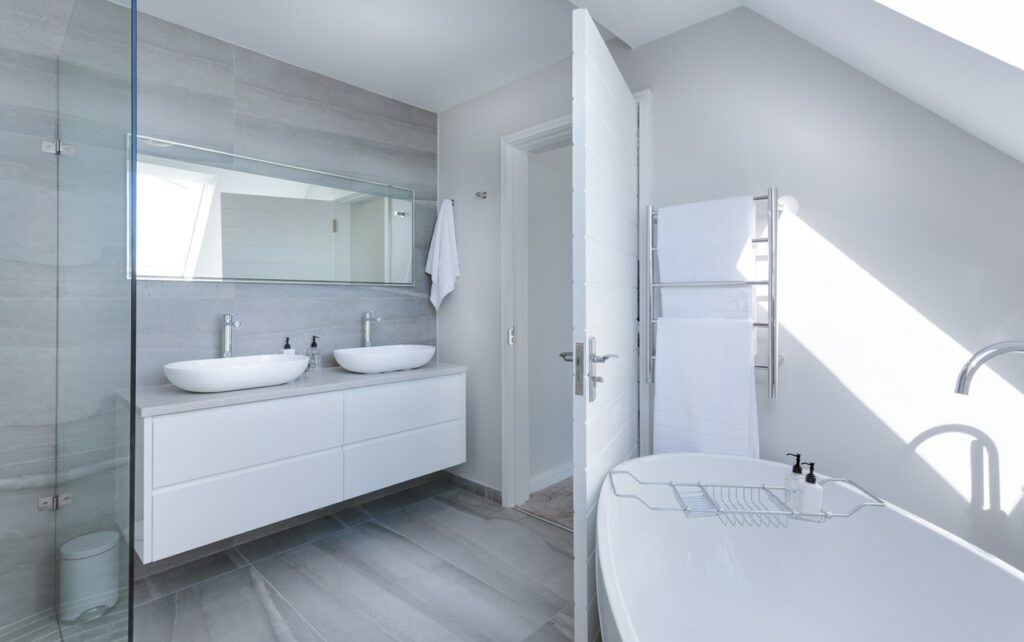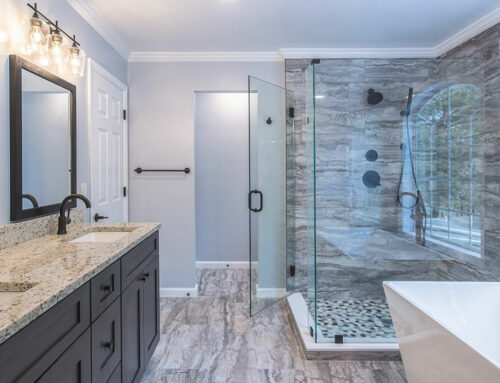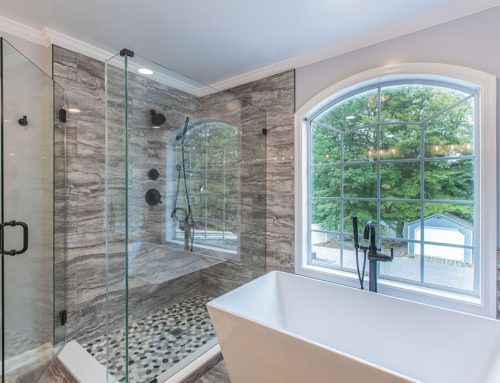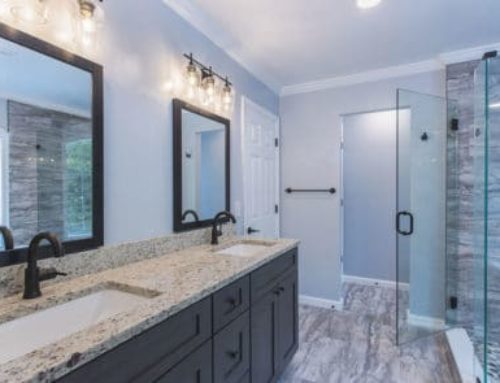Imagine spending several hundred if not thousands on insulating your home. Just to be told, you have to put holes in it to let cold air in. If not that, imagine building a new bathroom to meet energy-efficient standards. You cannot remodel a bathroom without improving bathroom ventilation.
However, the better technology you use, the more holes you have to put in. This is exactly what you have to do. Why?
Because your bathroom is the wettest room in the home, it can attract mold, mildew, and other nasty bacterias. This is because of the humidity present in a bathroom. Occasional drips, steamy showers, and faulty sinks can add up to the moisture.
High humidity and moisture can cause significant problems like chipped vanities, peeled wallpaper, pungent smell, and new scratches and spots. Luckily, you can control this resulting issue by properly ventilating your bathroom. Here are ways you can mitigate the risk by improving bathroom ventilation.
Choose The Right Ventilation System

Photo by Tim Mossholder from Pexels
You can use various ventilation systems to remove foul odors and moisture in a bathroom, an essential living space.
On a special note, there are more than 100 species of bacteria in excrement, and even the lousy odor can lead to secondary bacterial infections such as dermatitis, typhoid, and more.
So it is essential to prevent the spread of bad odor, bacteria, and venting immediately. Here the right bathroom vent can come in handy.
By improving bathroom ventilation, you can remove the moisture-laden air and the odor, too. These ventilation systems are quite common and are found in a variety of styles.
How to Choose The Right Fan
When you’re picking out a new fan for your bathroom, there are a few things you need to check before you buy. Mainly, the CFMs and the sones. Sones will tell you how loud the fan is – the higher the number, the louder the fan. You can consider two sones to be quiet.
On the other hand, CFMs, which means cubic feet per minute, is a measure of airflow. The larger the room, the larger the number you require. For a powder room, 50-60 CFM is enough. For a master bathroom that is 100 square feet, 120 CFM capacity will be enough.
You can opt for a ceiling fan, wall-mounted fan, simple box fan, and many more for your bathroom. These fans also come with new and upgraded technology.
For instance, it has motion sensors, a heat exchange function for colder months, decorative light attached to add a bit of aesthetic, and more.
Install it the Right Way
If you’re remodeling your bathroom, there’s no better time to install your vents. If you want to make your life easier, make sure your new fan will fit where your old one already is. In order to get the perfect exhaust fan, all you have to do is measure your space and get the features that match your needs.
Remember, you can always pull out your old one and take it with you to the store. This way, you won?t impact the sizing. To remove the old fan on your own, follow these simple steps. It won’t take more than 15 mins for you to disconnect the power, pull the fan and housing down, disconnect the wires, and remove it.
Once you have a new fan, be sure to read the instructions. Follow them accurately, and you can easily DIY-install your exhaust fan.
On the contrary, if you’re uncomfortable doing so, you can choose to call your local electrician to do it for you. Make sure you have the budget, as hiring an electrician isn’t cheap. While you have your contractor – include the charges to install the new fan and get it working, too.
Find the Right Timing

Photo by Pixabay from Pexels
Do you turn off the fan as soon as you’re done showering or bathing? It is a common mistake homeowner generally makes. However, there is an easy way of improving bathroom ventilation without doing much.
You need to leave the vent on for at least 15 minutes after using your bathroom to let all the moisture out. If you turn it off as soon as you’re done showering, it won’t give enough time for the vent to let all the air out.
With busy mornings and hectic schedules, turning it on / off every time is challenging, so choose a fan with humidity sensors.
This way, your fan will automatically turn on and off when the humidity levels are high in your bathroom. And you can also let the moisture out at all times with ease.
Clean With the Right Tools
The vents are often the last things on your mind. For this reason, it’s challenging to clean them very often. But if you want to focus on improving bathroom ventilation, you need to clean your vents once every 3-6 months.
Wear a mask, put on those gloves, and get ready to tackle some nasties. There can be dirt, grime, cobwebs, and more hidden inside. This is the reason your exhaust fan needs to be clean and free of dust.
Use your upholstery tool on your vacuum to get rid of all the grunge. This will speed up the flow and won’t obstruct the room’s ventilation. Also, look for drips and puddles. They can be quite hazardous for you and your family.
Leave All The Doors Open

Photo by Jean van der Meulen from Pexels
Leaving your doors open is key to improving bathroom ventilation; you need to keep your shower door and curtains open after showering. This will help the exhaust fan do its job efficiently in drying out each area when you leave it on for 15 minutes.
Shower curtains can accumulate moisture, too, due to the plastic/ fabric material. So one way to let the moisture from forming is to keep them closed with just a 3-inch crack open to circulate the air.
A dry bathroom is what you need to achieve every time you leave the fan running for 15 mins. It will also stop mold and mildew spores from forming.
Alternatively, make use of natural air if you don’t have an exhaust fan or ventilation system in place. You can just leave a window or door open for 15 minutes, and voila. There you have it, a dry bathroom with no nasties and perfect ventilation.





